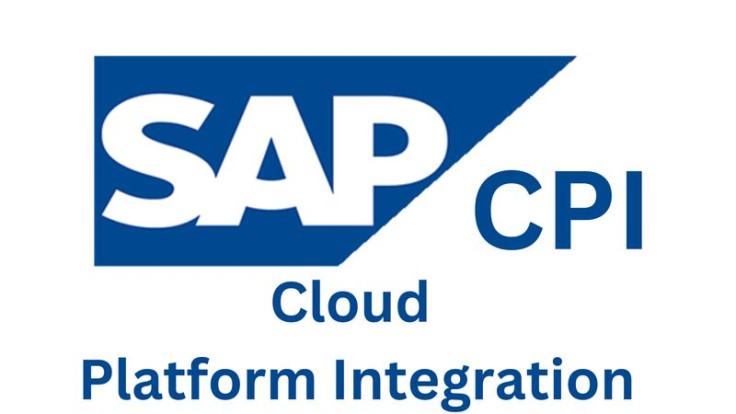Powering Procurement's Future: How SAP CPI Drives PunchOut and Next-Level Supplier Collaboration
- Posted on August 13, 2025
- SAP BTP
- By ROI Blogger
- 367 Views

In today's fast-paced business world, the procurement function is undergoing a radical transformation. The days of siloed systems, manual data entry, and fragmented supplier communication are rapidly fading. The future of procurement is all about real-time collaboration, seamless automation, and a unified digital ecosystem. At the heart of this revolution is SAP Cloud Platform Integration (CPI), a powerful middleware that is enabling organizations to unlock new levels of efficiency and strategic value.
This article will explore how SAP CPI is powering the modern procurement landscape, with a specific focus on its ability to handle PunchOut, automate supplier collaboration, and overcome the common challenges that have historically plagued integration projects.
Bridging the Gap: Integrating SAP S/4HANA with Ariba, Coupa, and More
For many enterprises, the core of their operations resides in a robust ERP system like SAP S/4HANA. However, modern procurement and sourcing often rely on specialized, best-of-breed platforms such as SAP Ariba and Coupa for managing catalogs, contracts, and supplier relationships. This creates a critical need for seamless integration to ensure data consistency and streamline processes.
SAP CPI acts as the central nervous system, connecting SAP S/4HANA with these external platforms. It provides pre-built integration packages and a flexible, cloud-native architecture that simplifies the complex task of data exchange. For example, through SAP CPI, a purchase requisition created in SAP S/4HANA can be automatically transmitted to SAP Ariba for approval and sourcing. Once a purchase order is generated in Ariba, it can be seamlessly sent back to S/4HANA, creating a complete and auditable record.
This integration extends beyond traditional procurement platforms to include major e-commerce players like Amazon Business. CPI enables a "PunchOut" experience, where a user can navigate from their S/4HANA or Ariba system directly to a supplier's catalog (e.g., Amazon Business), build a shopping cart, and "punch out" back to their own system. The shopping cart data is automatically transferred, creating a purchase requisition that adheres to the company's internal purchasing policies. This integration provides the best of both worlds: the vast selection and user-friendly experience of a consumer-like marketplace, combined with the governance and control of a corporate procurement system.
By using CPI, businesses can:
-
Centralize Data: Ensure all master data, such as material information and vendor details, is synchronized between systems, eliminating the risk of errors and inconsistencies.
-
Automate Workflows: Trigger complex business processes across different platforms without manual intervention, from requisition to invoice settlement.
-
Enhance Visibility: Gain a single, end-to-end view of the procurement process, from sourcing to payment, regardless of which system the data originated in.
Automating the Procurement Lifecycle: From Catalog Updates to Order Flows
The true value of a modern procurement system lies in its ability to automate repetitive, manual tasks. SAP CPI is the engine that drives this automation, particularly in two critical areas: supplier catalog management and the entire order-to-pay process.
Automating PunchOut and Catalog Updates: The PunchOut process is a powerful example of this automation. When a user "punches out" to a supplier's website, CPI facilitates the secure, real-time exchange of data. The user's system sends a request, and the supplier's system authenticates and displays their catalog. When the user checks out, the selected items and their details are automatically transferred back to the buyer's system, eliminating the need for manual data entry.
Beyond PunchOut, SAP CPI automates the ongoing maintenance of supplier catalogs. Instead of relying on static, outdated catalogs, businesses can use CPI to regularly synchronize catalog data from suppliers. This ensures that pricing and product availability are always current, reducing the chance of purchasing errors and disputes.
Streamlining Order-to-Cash Flows: The journey of a purchase order doesn't end with the creation of a requisition. SAP CPI ensures a smooth, automated flow of information throughout the entire process:
-
Purchase Order Transmission: Once an order is approved in SAP S/4HANA, CPI can automatically transmit it to the supplier via their preferred method (e.g., cXML, EDI).
-
Order Confirmation: The supplier's order confirmation is received via CPI and automatically routed back to SAP S/4HANA, updating the status of the purchase order.
-
Advanced Shipping Notices (ASNs): As goods are shipped, the supplier sends an ASN. CPI processes this notice, allowing the receiving department to prepare for the delivery and providing real-time tracking information.
-
Invoice Processing: Once the invoice is received, CPI can automatically match it against the purchase order and the goods receipt, flagging any discrepancies for human review and enabling a touchless invoice-to-pay process.
This end-to-end automation, powered by SAP CPI, dramatically reduces processing times, minimizes human error, and frees up procurement professionals to focus on more strategic tasks like supplier relationship management and value-added sourcing.
Overcoming Common Middleware Challenges
Historically, integrating disparate systems was a source of significant headaches, from complex coding to security risks. SAP CPI, as a modern, cloud-native integration platform as a service (iPaaS), is specifically designed to address these challenges.
-
Complexity and Development Time: Unlike legacy on-premise middleware that often required extensive custom coding, SAP CPI offers a low-code/no-code approach with a visual interface. This simplifies the development of integration flows (iFlows) and reduces the time and resources needed for implementation. Pre-packaged content for common scenarios, such as Ariba integration, further accelerates deployment.
-
Security and Compliance: Data transmitted between systems, especially sensitive procurement data, must be secure. SAP CPI is part of the SAP Business Technology Platform (BTP), providing enterprise-grade security features out of the box. It supports various authentication methods (like mTLS) and robust encryption protocols to ensure data integrity and confidentiality.
-
Scalability and Maintenance: Legacy on-premise middleware often struggled to scale with growing business needs. SAP CPI's cloud-native architecture means it can easily handle increased transaction volumes without a need for additional hardware investment. SAP also manages all the infrastructure and software updates, reducing the IT overhead for the customer.
-
Monitoring and Visibility: When an integration fails, troubleshooting can be a nightmare with traditional middleware. SAP CPI provides a centralized monitoring dashboard that gives real-time visibility into all integration flows, allowing administrators to quickly identify and resolve issues, ensuring minimal disruption to business operations.
The New Era of Procurement
The future of procurement is not just about making purchases; it's about making smarter, faster, and more strategic decisions. SAP CPI is the catalyst for this change, enabling organizations to build a truly connected and automated procurement ecosystem. By seamlessly integrating SAP S/4HANA with leading platforms like Ariba, Coupa, and even e-commerce giants like Amazon, and by automating critical processes like PunchOut and order flows, SAP CPI is helping businesses to transcend the limitations of the past. It's not just a tool for integration; it's a strategic asset that is fundamentally changing how companies collaborate with their suppliers and manage their purchasing process. The era of the fragmented, manual procurement system is over, the future is integrated, intelligent, and powered by SAP CPI.





Write a Response